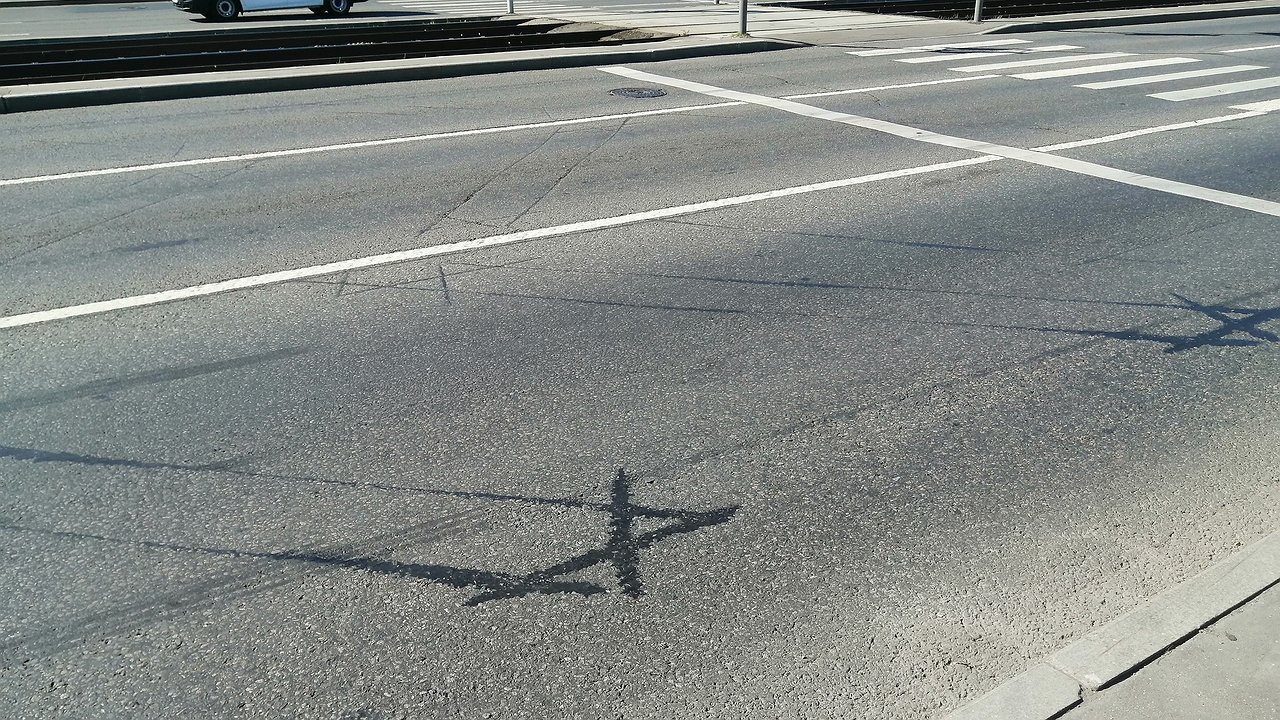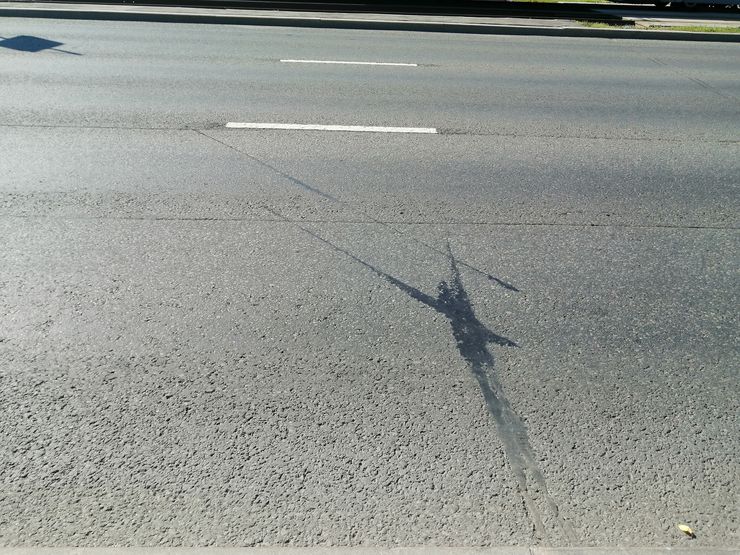What do the black symbols on the sidewalk at intersections mean?
- July 10, 2023
- 0
Not all signs that appear on the roadway must be strictly observed by the driver. Some of the “frescoes” turn out to be the result of the roadside
Not all signs that appear on the roadway must be strictly observed by the driver. Some of the “frescoes” turn out to be the result of the roadside

People are generally not very curious. Proof of this are the strange geometric shapes on the roadway, applied with something like black mastic. Motorists have been driving their cars over them for years and are not very interested in the meaning of these signs. We are talking about drawings, which, as a rule, consist of several straight lines. Some are parallel to each other while some intersect.
In some places of the road network, similar results of the work of mysterious artists exist in a single copy. And somewhere on each of the lanes you can see several repeating “ornaments”. If you look closely, the drawings turn out to be grooves in the asphalt, filled with something like bitumen. This is especially noticeable where the wheels of passing cars ripped him from his “familiar place” over time.
It seems that some craftsmen cut through the sidewalk with a tarp saw, intending to remove the pieces of it, and then, halfway to the goal, changed their minds and tried to make up for the damage done by covering the cuts with whatever was there . hand. In fact, this is a hint. Note: “bitumen drawings” are always located on city streets and highways near intersections or traffic lights.
Indeed, the asphalt was once sawn there. But no one was going to rip him off. Slots in the coating are made on purpose: special induction sensors are laid in them and “buried” there, which can react to oncoming vehicles. After all, any machine is a pile of iron with a magnetic field and filled with working electrical devices.
The sensors are located at a depth of 13-15 centimetres, so that they cannot be damaged during asphalt replacement. Yet they perfectly feel the transport going over them and they can even distinguish a bus from a passenger car. The sensors are connected to the “brain” of a nearby traffic light, which changes modes based on the information received from them: for example, turning on the “green” light for an approaching bus.
Or “seeing” that there is an excess of vehicles at one of the entrances to the intersection, the traffic light increases the cycle of open traffic from this direction. Moscow now has several hundred of these “smart” traffic lights. Because of this, “black signs” can be seen on the asphalt at many points of the city’s road network.

People are generally not very curious. Proof of this are the strange geometric shapes on the roadway, applied with something like black mastic. Motorists have been driving their cars over them for years and are not very interested in the meaning of these signs. We are talking about drawings, which, as a rule, consist of several straight lines. Some are parallel to each other while some intersect.
In some places of the road network, similar results of the work of mysterious artists exist in a single copy. And somewhere on each of the lanes you can see several repeating “ornaments”. If you look closely, the drawings turn out to be grooves in the asphalt, filled with something like bitumen. This is especially noticeable where the wheels of passing cars ripped him from his “familiar place” over time.
It seems that some craftsmen cut through the sidewalk with a tarp saw, intending to remove the pieces of it, and then, halfway to the goal, changed their minds and tried to make up for the damage done by covering the cuts with whatever was there . hand. In fact, this is a hint. Note: “bitumen drawings” are always located on city streets and highways near intersections or traffic lights.
Indeed, the asphalt was once sawn there. But no one was going to rip him off. Slots in the coating are made on purpose: special induction sensors are laid in them and “buried” there, which can react to oncoming vehicles. After all, any machine is a pile of iron with a magnetic field and filled with working electrical devices.
The sensors are located at a depth of 13-15 centimetres, so that they cannot be damaged during asphalt replacement. Yet they perfectly feel the transport going over them and they can even distinguish a bus from a passenger car. The sensors are connected to the “brain” of a nearby traffic light, which changes modes based on the information received from them: for example, turning on the “green” light for an approaching bus.
Or “seeing” that there is an excess of vehicles at one of the entrances to the intersection, the traffic light increases the cycle of open traffic from this direction. Moscow now has several hundred of these “smart” traffic lights. Because of this, “black signs” can be seen on the asphalt at many points of the city’s road network.
Source: Avto Vzglyad
Donald Salinas is an experienced automobile journalist and writer for Div Bracket. He brings his readers the latest news and developments from the world of automobiles, offering a unique and knowledgeable perspective on the latest trends and innovations in the automotive industry.